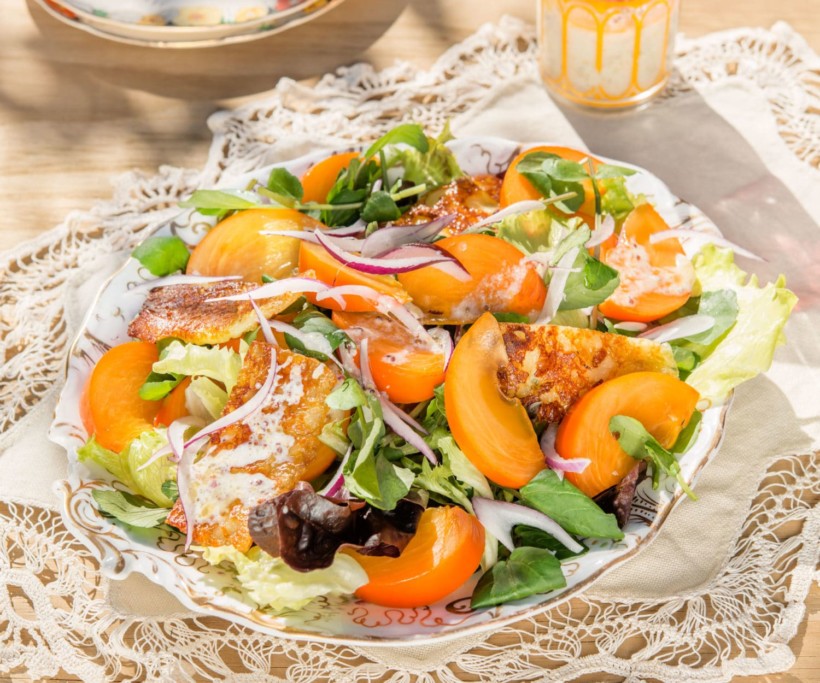
Persimmon winter salad
This persimmon winter salad is great with white meat, or even as part of a mid-Winter Christmas celebration with turkey!
Ingredients
- 1 bunch watercress thin stems removed
- 80 g mixed salad leaves
- ½ iceberg lettuce washed and torn into pieces
- ½ red onion finely sliced
- 200 g haloumi
- 1-2 tablespoons olive oil
- 2 persimmons washed
Buttermilk dressing
- ¼ cup buttermilk
- 2 tablespoons sour cream
- 1 teaspoon wholegrain mustard check label if eating gluten free
- 1 clove garlic crushed
- 1 teaspoon raw honey
- ¼ cup extra virgin olive oil
- 2 tablespoons fresh herbs such as marjoram oregano, chives or parsley, finely chopped
- 1 tablespoon lemon juice
Instructions
- Arrange watercress, mixed salad and lettuce leaves on a large, flat platter with sliced red onion scattered throughout.
- Cut haloumi into 3mm-thick slices. Heat a large, non-stick pan to medium-high heat, drizzle with the oil and fry haloumi for about 2 minutes on each side or until golden. Allow to cool.
- Remove the shallow core and leaves of the persimmons. Slice in half down the middle, then cut into thick wedges. Arrange on the salad leaves with the cooled haloumi.
- To make the dressing, whisk together buttermilk, sour cream, mustard, garlic and honey. Season with salt and pepper. Whisk in the olive oil, herbs and lemon juice. Add more seasoning to taste then pour over the salad and serve.
Notes
If you like this persimmon winter salad, you’ll also like this persimmon, pear and fennel salad. I also love persimmon as a dessert, like my honey-baked persimmons with vanilla and cinnamon. As you can probably tell, I love persimmon!
Persimmons 101:
The most common variety of persimmon in New Zealand is Fuyu, which has been here since 1873.
Fuyus are non-astringent and can be eaten raw or cooked. They are native to China and have a mild, not-too-sweet flavour.
Do not use the astringent type (Hachiya, identifiable by their pointy ends) for this recipe.
This recipe comes from the June/July issue of NADIA magazine.
Fuyus are non-astringent and can be eaten raw or cooked. They are native to China and have a mild, not-too-sweet flavour.
Do not use the astringent type (Hachiya, identifiable by their pointy ends) for this recipe.
This recipe comes from the June/July issue of NADIA magazine.

